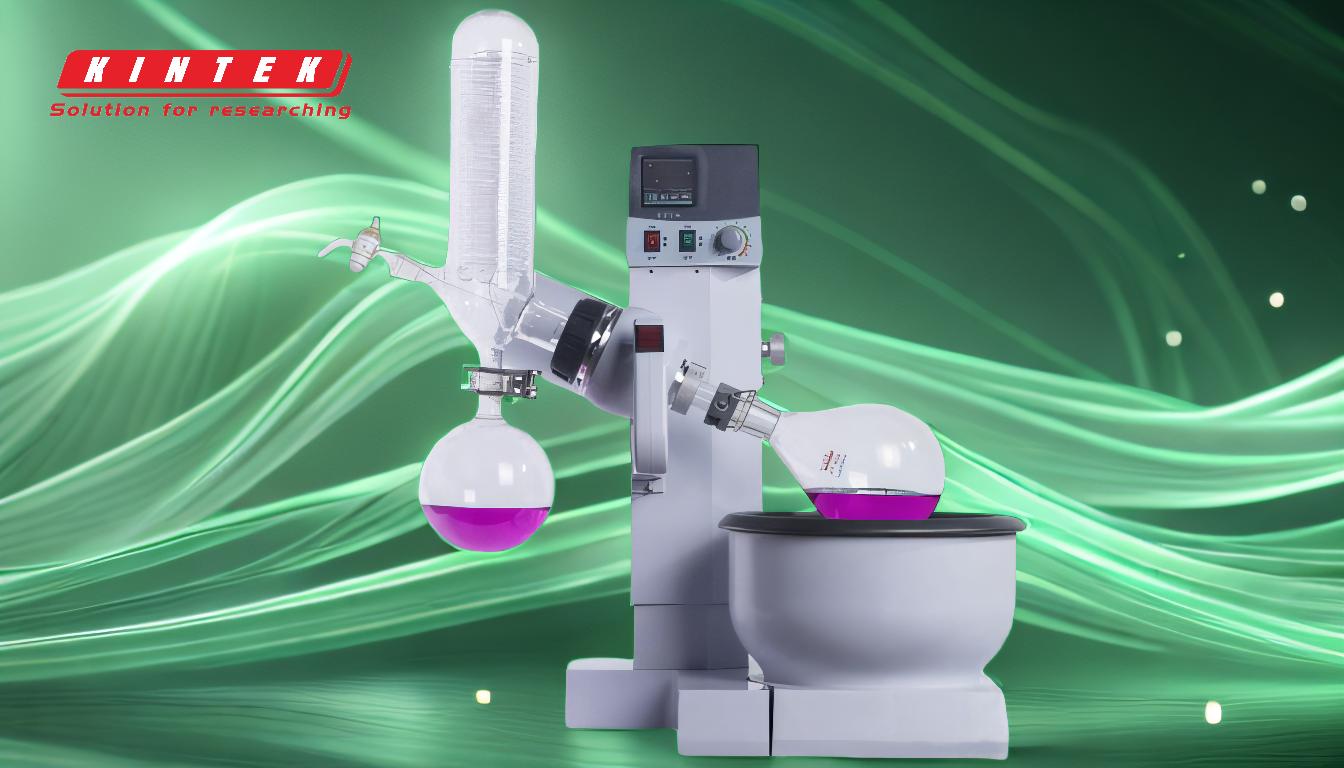Bumping in a rotary evaporator is a phenomenon where a solvent, under vacuum conditions, superheats and suddenly boils violently, often without warning. This rapid boiling can cause the solvent to erupt, leading to sample loss, contamination, and potential damage to equipment. Bumping occurs due to uneven heating, rapid temperature or vacuum changes, or the absence of nucleation sites. It is a significant issue in laboratory settings as it wastes time, effort, and resources. Preventative measures include controlling the vacuum and temperature, ensuring homogeneous phases, and using boiling chips or other agents to promote uniform boiling.
Key Points Explained:

-
Definition of Bumping:
- Bumping refers to the sudden and violent boiling of a solvent under vacuum conditions in a rotary evaporator. This occurs when the solvent superheats and, upon nucleation, rapidly boils, often ejecting the liquid from the container.
- It is a common problem in chemistry labs, particularly when working with homogeneous liquids.
-
Causes of Bumping:
- Superheating: Under vacuum, solvents can heat beyond their boiling point without actually boiling, leading to a sudden and explosive release of energy when nucleation occurs.
- Rapid Changes in Temperature or Vacuum: Sudden increases in temperature or vacuum levels can cause the solvent to boil excessively or too quickly.
- Lack of Nucleation Sites: Homogeneous liquids without nucleation sites (e.g., scratches, impurities, or boiling chips) are more prone to bumping because there are no points for bubbles to form gradually.
-
Consequences of Bumping:
- Sample Loss: The violent boiling can cause the solvent to be ejected from the rotary evaporator, leading to the loss of the sample.
- Contamination: Bumping can result in cross-contamination if the solvent or sample comes into contact with other materials or equipment.
- Equipment Damage: In extreme cases, the force of the bumping can damage the rotary evaporator or its components.
- Wasted Resources: Bumping often necessitates repeating the entire procedure, wasting time, effort, and resources.
-
Preventative Measures:
- Control Vacuum and Temperature: Carefully regulate the vacuum strength and bath temperature to ensure a steady and even rate of evaporation.
- Use Boiling Chips or Stones: Adding boiling chips or stones provides nucleation sites, promoting uniform boiling and reducing the risk of bumping.
- Avoid Rapid Changes: Gradually adjust temperature and vacuum levels to prevent sudden boiling.
- Ensure Homogeneous Phases: Homogeneous mixtures are less likely to bump compared to heterogeneous mixtures.
-
Practical Considerations for Equipment Purchasers:
- Choose Equipment with Precise Controls: Rotary evaporators with precise temperature and vacuum controls can help minimize the risk of bumping.
- Consider Accessories: Purchasing boiling chips, anti-bumping granules, or specialized flasks designed to reduce bumping can be a worthwhile investment.
- Training and Protocols: Ensure that laboratory personnel are trained to operate rotary evaporators correctly and follow protocols to prevent bumping.
By understanding the causes and consequences of bumping, and implementing preventative measures, laboratories can reduce the risk of this phenomenon and improve the efficiency and safety of their rotary evaporation processes.
Summary Table:
| Aspect | Details |
|---|---|
| Definition | Sudden, violent boiling of solvents under vacuum, causing sample loss. |
| Causes | Superheating, rapid temperature/vacuum changes, lack of nucleation sites. |
| Consequences | Sample loss, contamination, equipment damage, wasted resources. |
| Preventative Measures | Control vacuum/temperature, use boiling chips, avoid rapid changes. |
| Equipment Tips | Choose precise controls, invest in accessories, train staff effectively. |
Need help preventing bumping in your rotary evaporator? Contact our experts today for tailored solutions!










